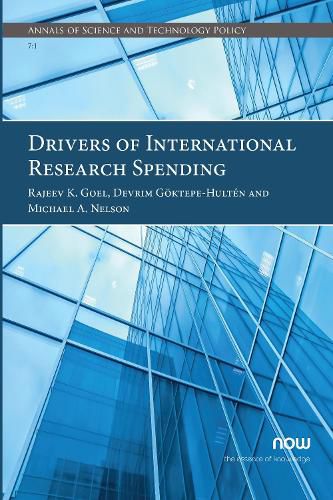Readings Newsletter
Become a Readings Member to make your shopping experience even easier.
Sign in or sign up for free!
You’re not far away from qualifying for FREE standard shipping within Australia
You’ve qualified for FREE standard shipping within Australia
The cart is loading…






This title is printed to order. This book may have been self-published. If so, we cannot guarantee the quality of the content. In the main most books will have gone through the editing process however some may not. We therefore suggest that you be aware of this before ordering this book. If in doubt check either the author or publisher’s details as we are unable to accept any returns unless they are faulty. Please contact us if you have any questions.
Drivers of International Research Spending contributes to the literature on the economics of technical change in two ways. First, it provides an overview and a critical appraisal of the literature on the drivers of research spending, especially focusing on the extant empirical studies in recent years. Second, it provides a unique insight into the empirical determinants of research spending using micro or firm-level data on research spending decisions across a very large sample of mostly emerging nations. Firm-level information on research enables the consideration of many characteristics (e.g., size, vintage, ownership, etc.) of firms that perform research. This monograph is organized as follows. The authors begin by presenting a schematic diagram that describes their vision about what constitutes R&D, its various dimensions, and the key players involved in such activity. Next, they present an extended overview of the literature on the causes and effects of technical change, including the drivers of research spending. The authors then discuss micro-level data sets on technical changes and R&D activity, with special attention given to the Enterprise Surveys (ES) dataset organized through the World Bank, which is employed in modeling cross-country firm-level R&D decision-making. Finally, the monograph provides recommendations for technology policy and suggests some directions for future research.
$9.00 standard shipping within Australia
FREE standard shipping within Australia for orders over $100.00
Express & International shipping calculated at checkout
This title is printed to order. This book may have been self-published. If so, we cannot guarantee the quality of the content. In the main most books will have gone through the editing process however some may not. We therefore suggest that you be aware of this before ordering this book. If in doubt check either the author or publisher’s details as we are unable to accept any returns unless they are faulty. Please contact us if you have any questions.
Drivers of International Research Spending contributes to the literature on the economics of technical change in two ways. First, it provides an overview and a critical appraisal of the literature on the drivers of research spending, especially focusing on the extant empirical studies in recent years. Second, it provides a unique insight into the empirical determinants of research spending using micro or firm-level data on research spending decisions across a very large sample of mostly emerging nations. Firm-level information on research enables the consideration of many characteristics (e.g., size, vintage, ownership, etc.) of firms that perform research. This monograph is organized as follows. The authors begin by presenting a schematic diagram that describes their vision about what constitutes R&D, its various dimensions, and the key players involved in such activity. Next, they present an extended overview of the literature on the causes and effects of technical change, including the drivers of research spending. The authors then discuss micro-level data sets on technical changes and R&D activity, with special attention given to the Enterprise Surveys (ES) dataset organized through the World Bank, which is employed in modeling cross-country firm-level R&D decision-making. Finally, the monograph provides recommendations for technology policy and suggests some directions for future research.